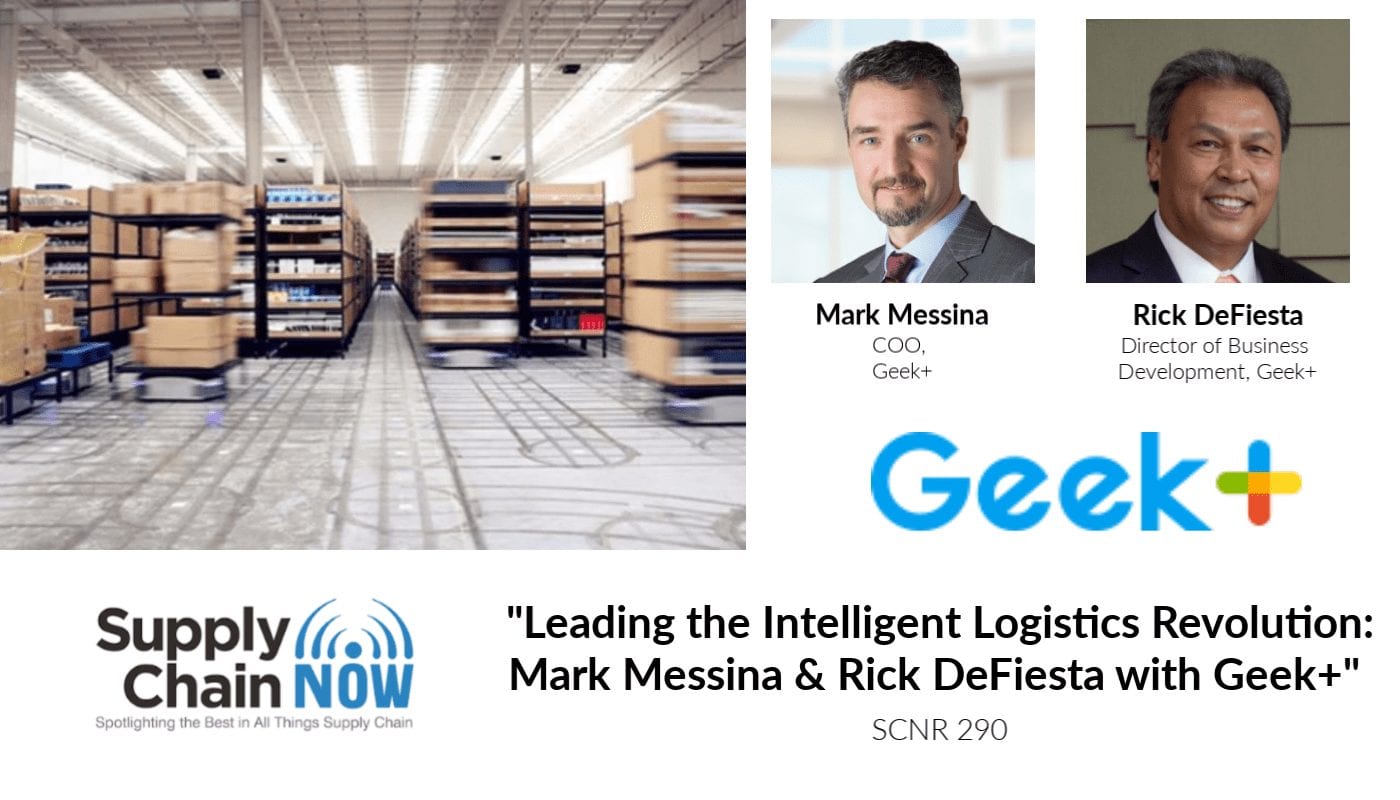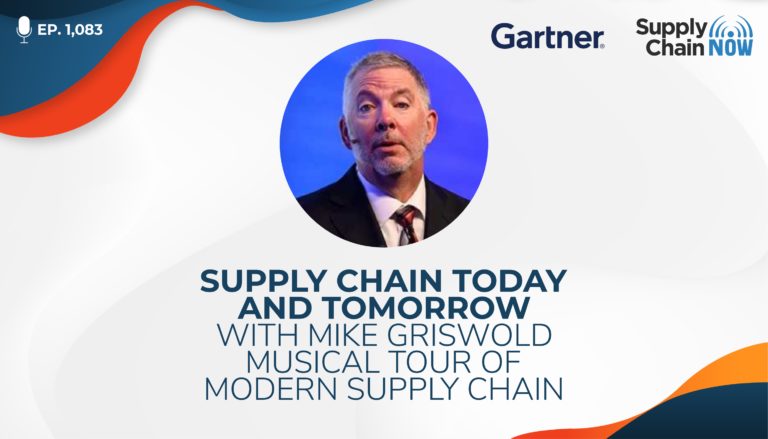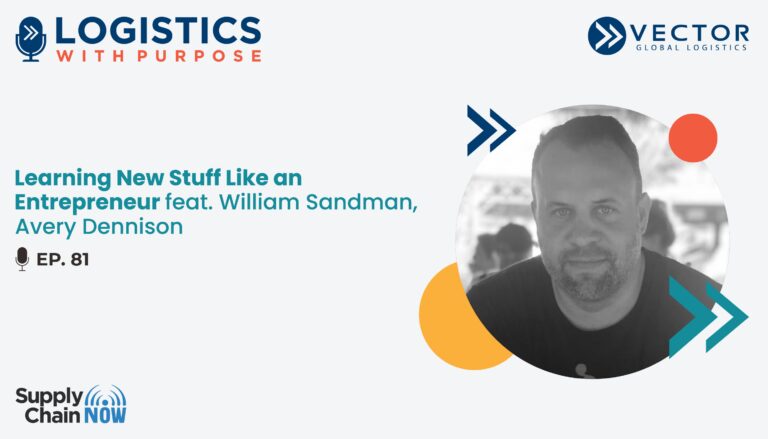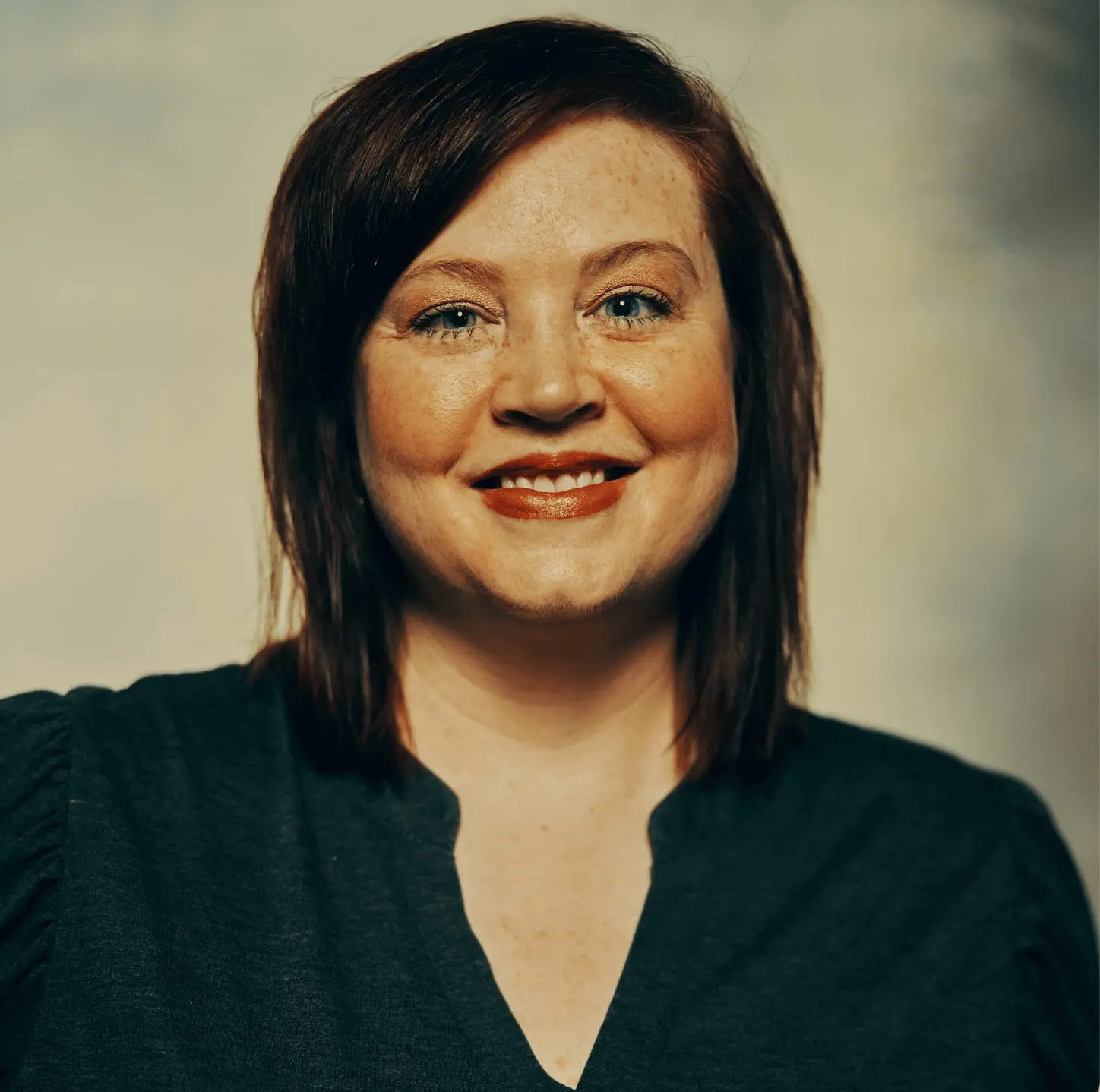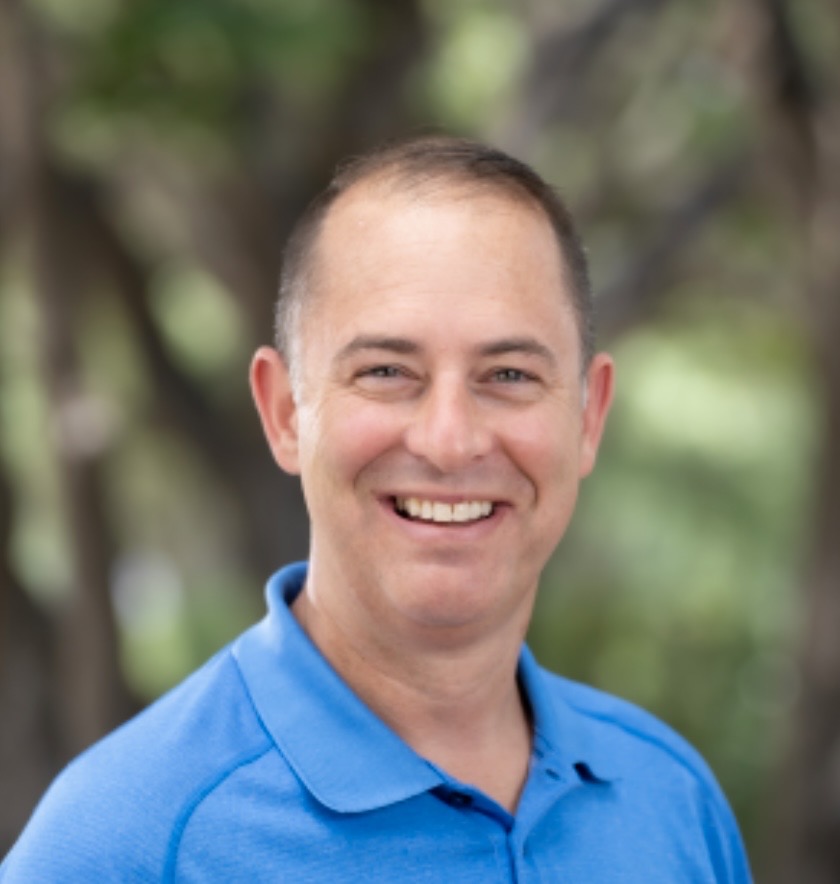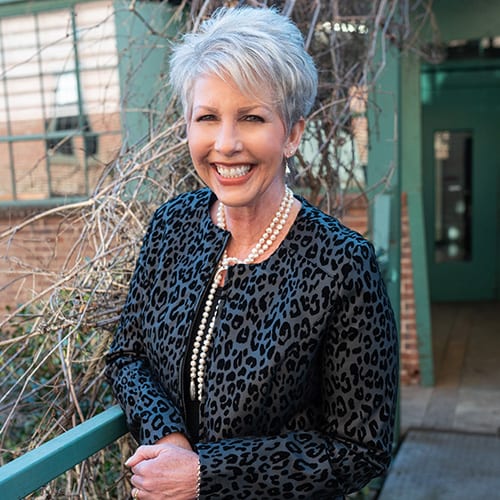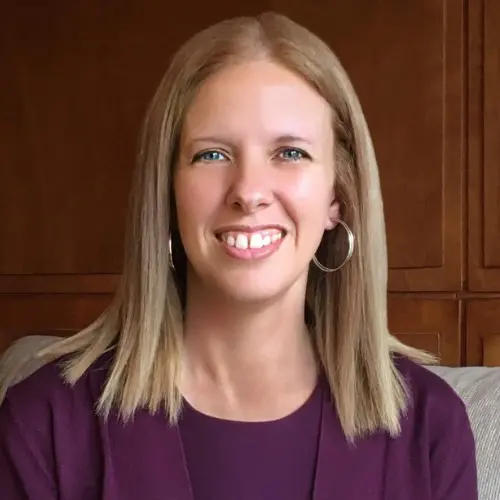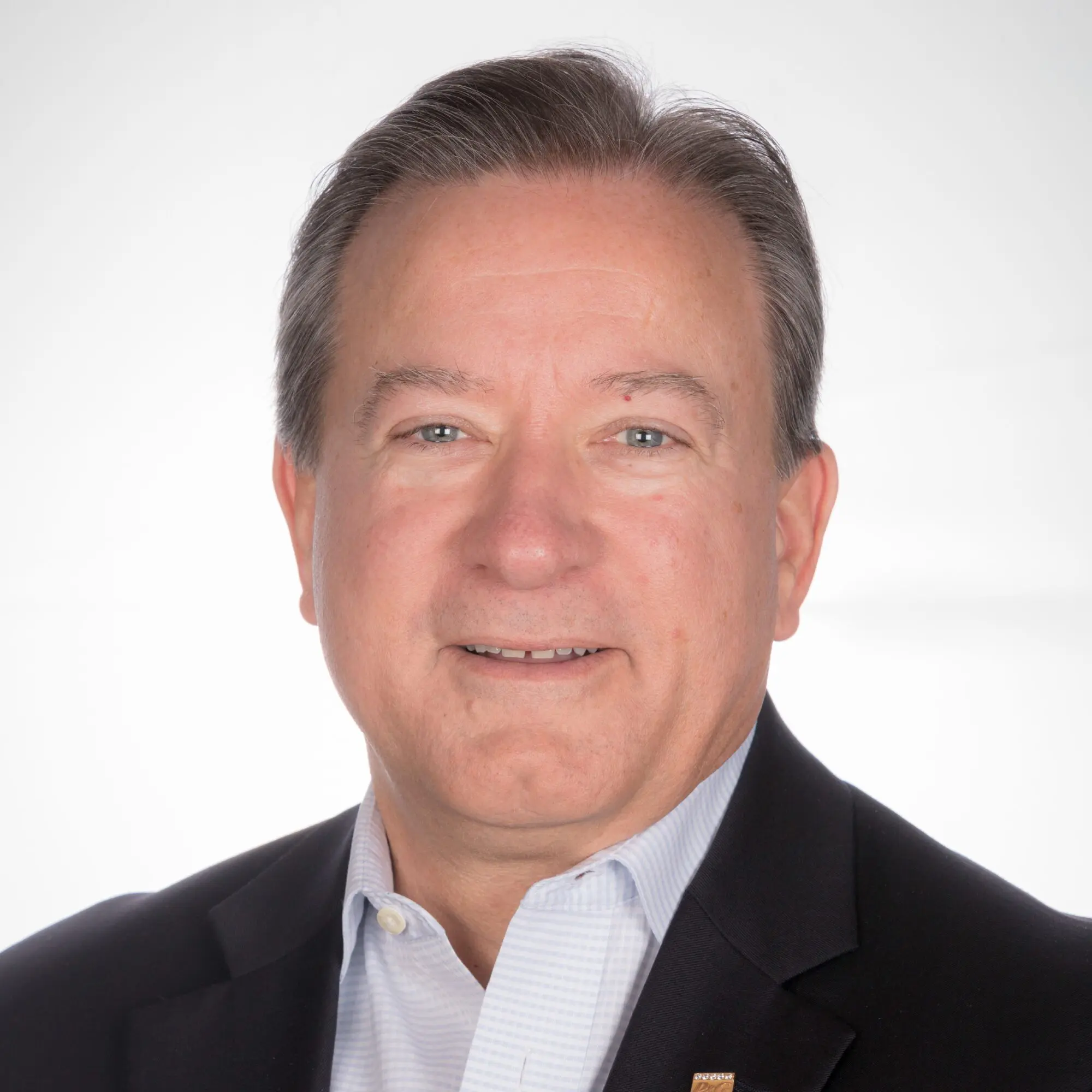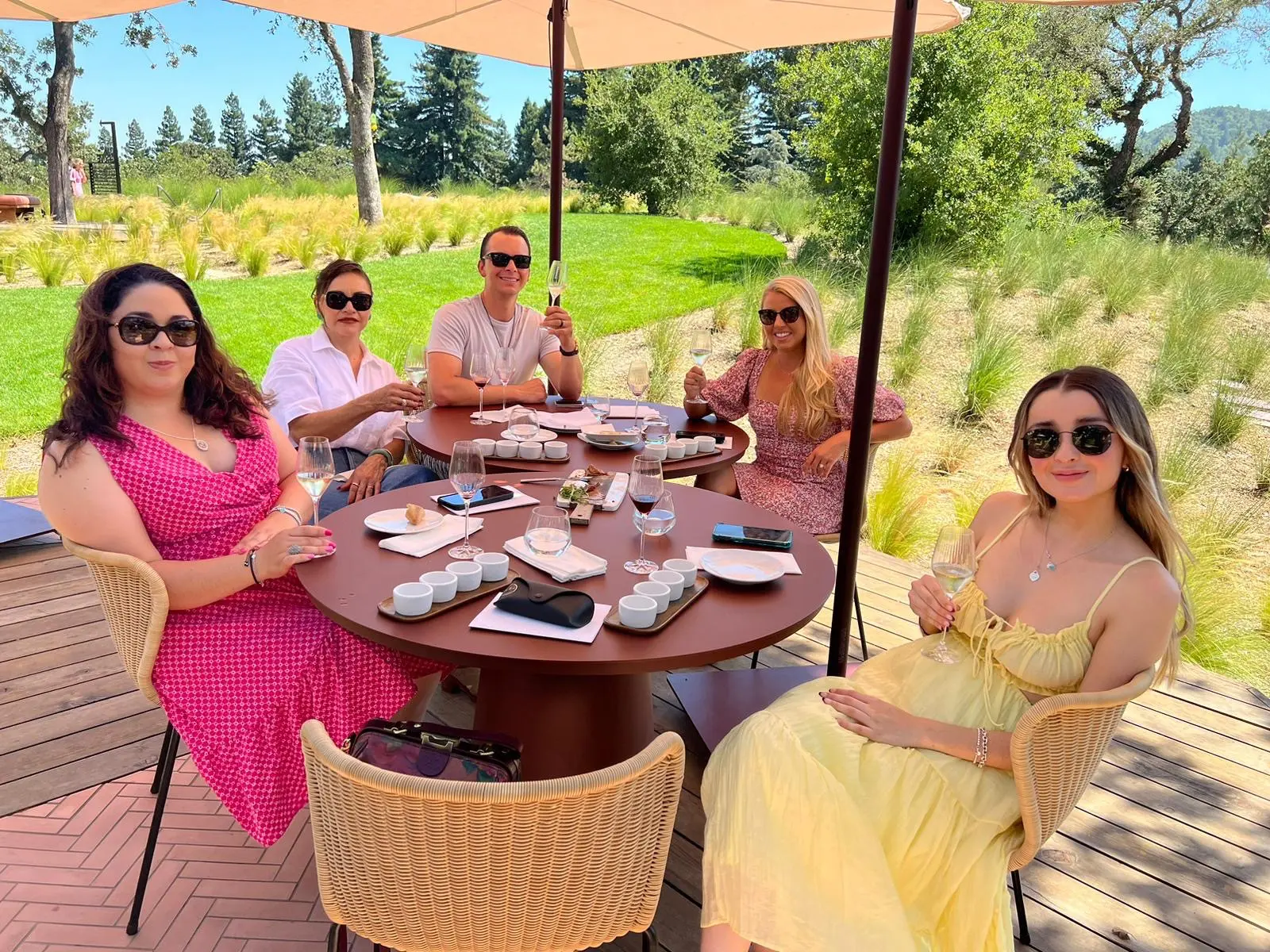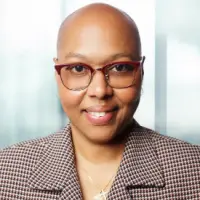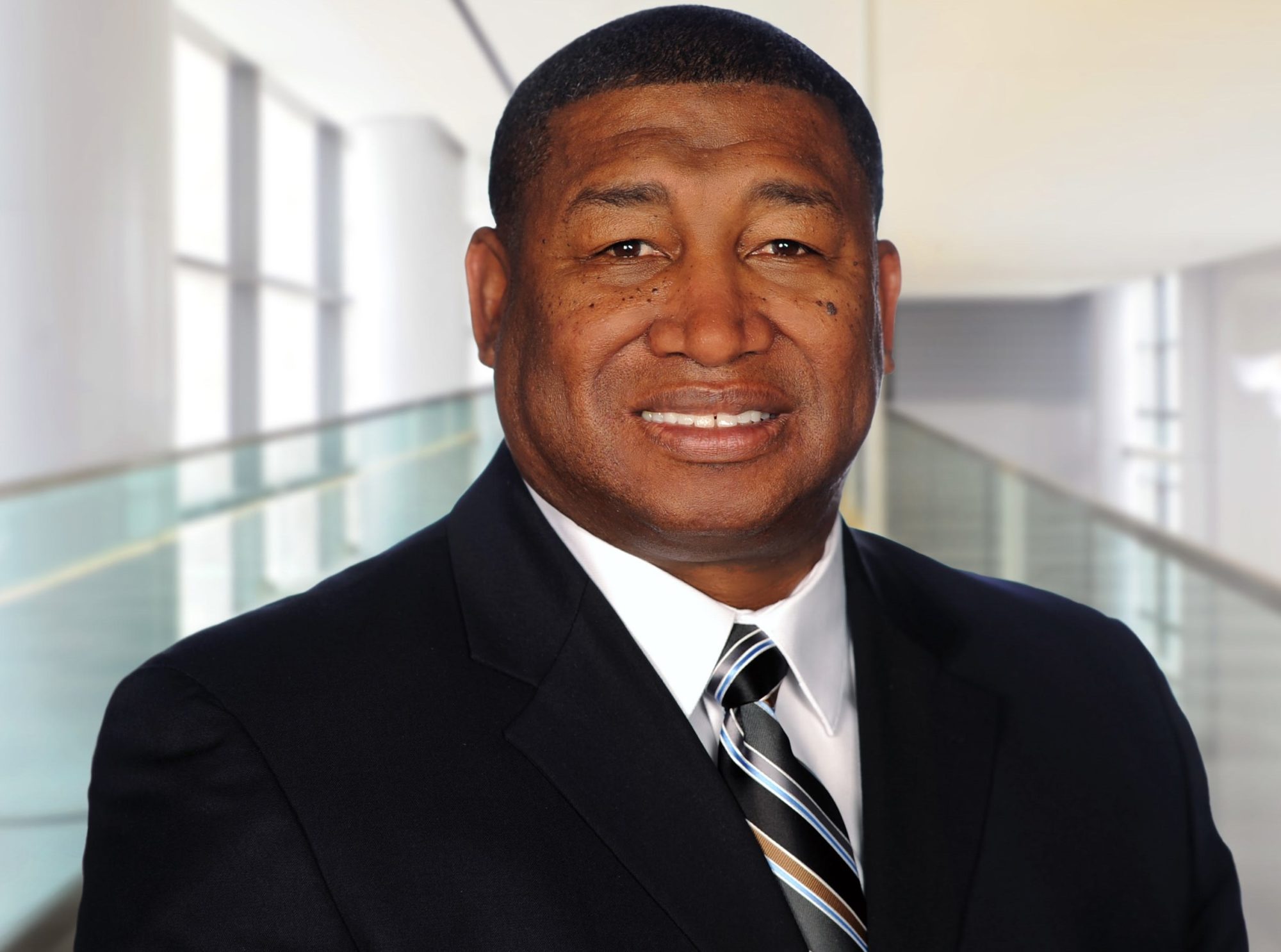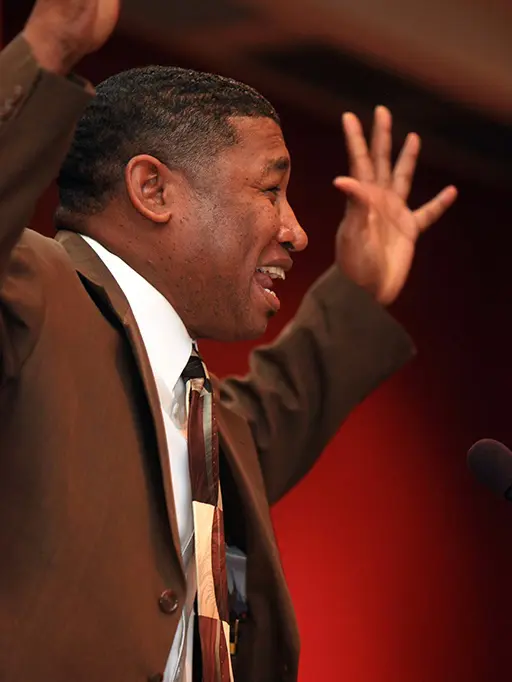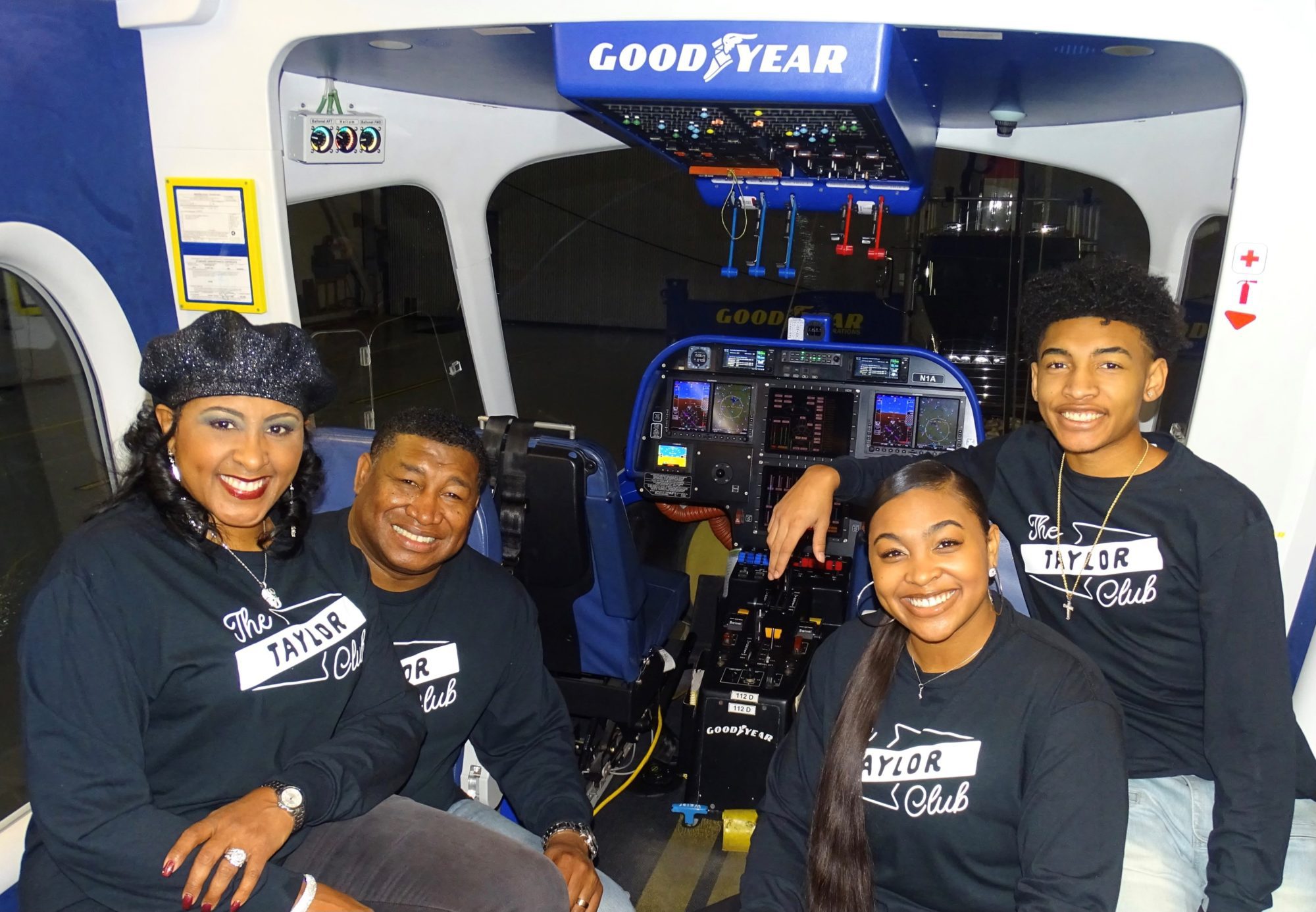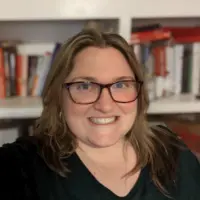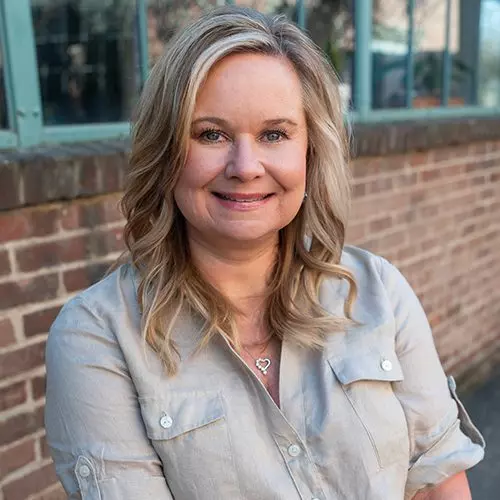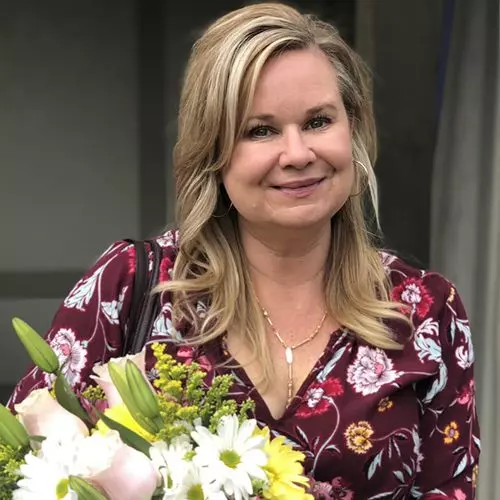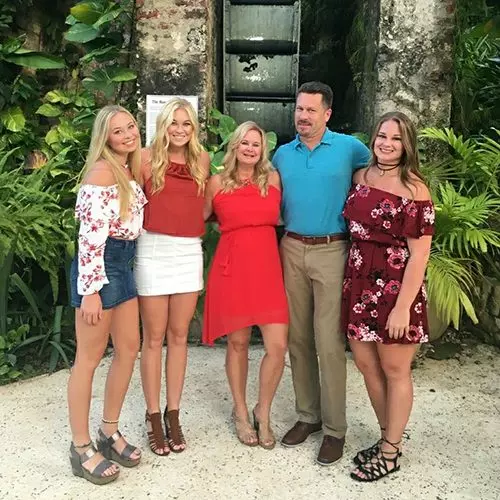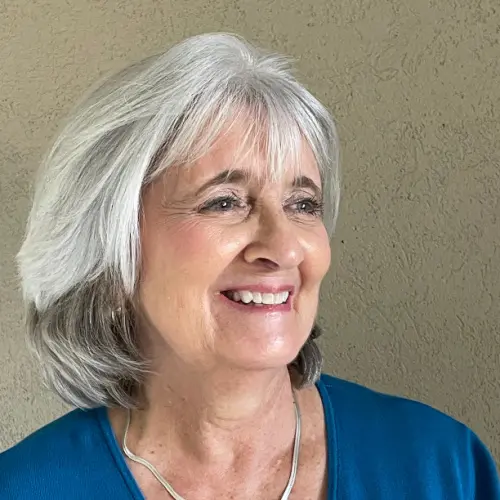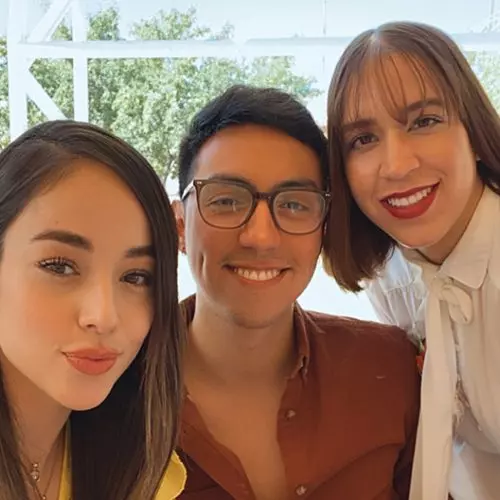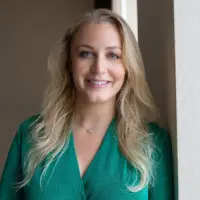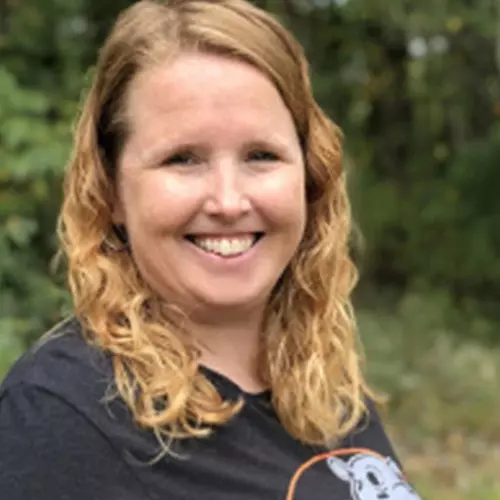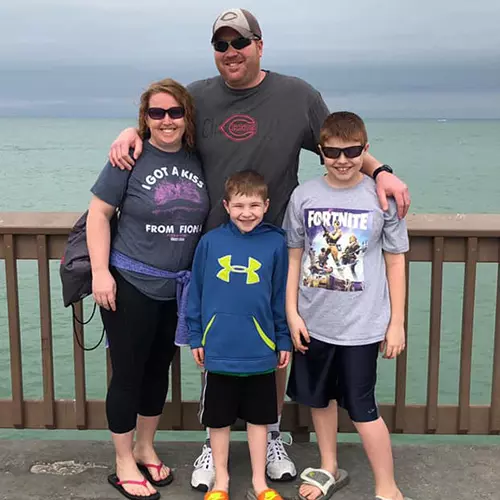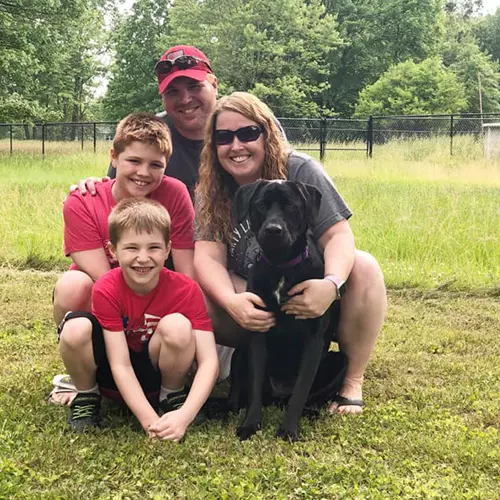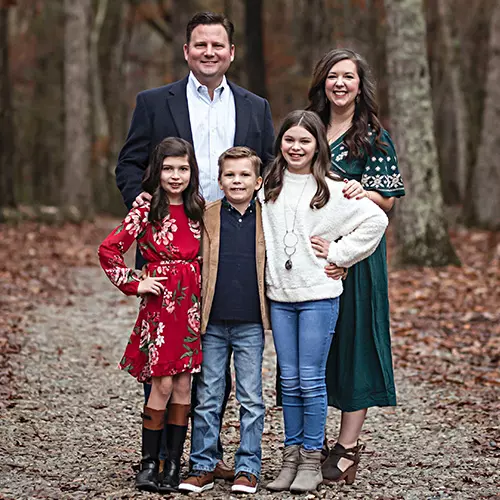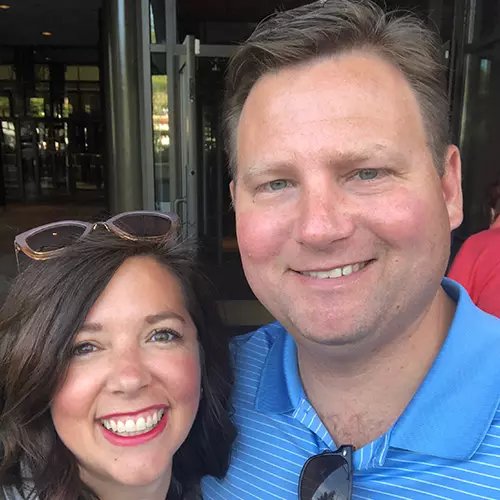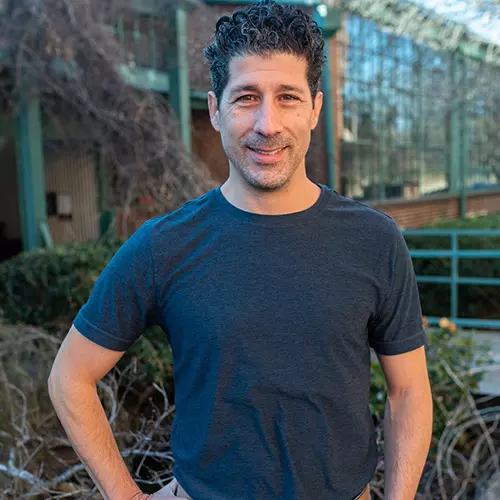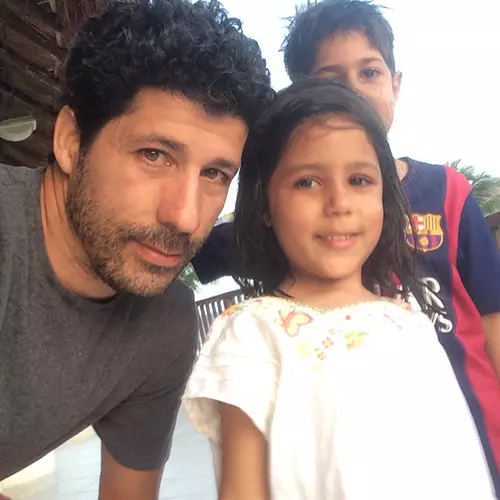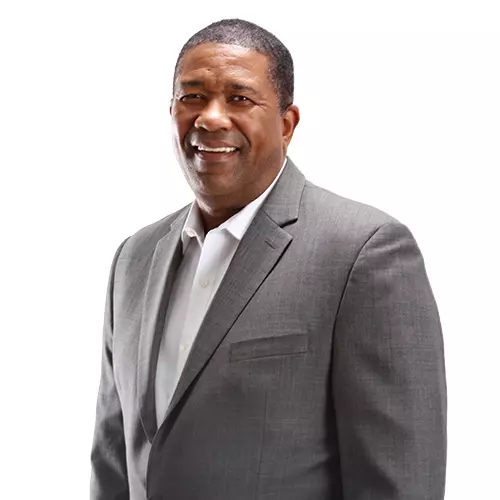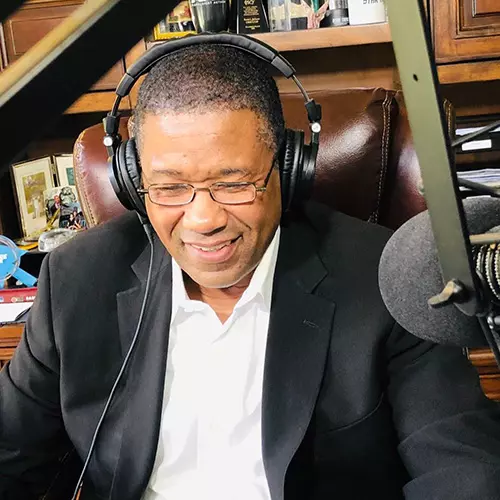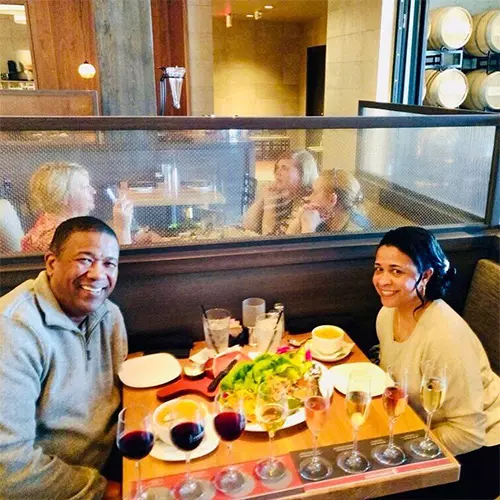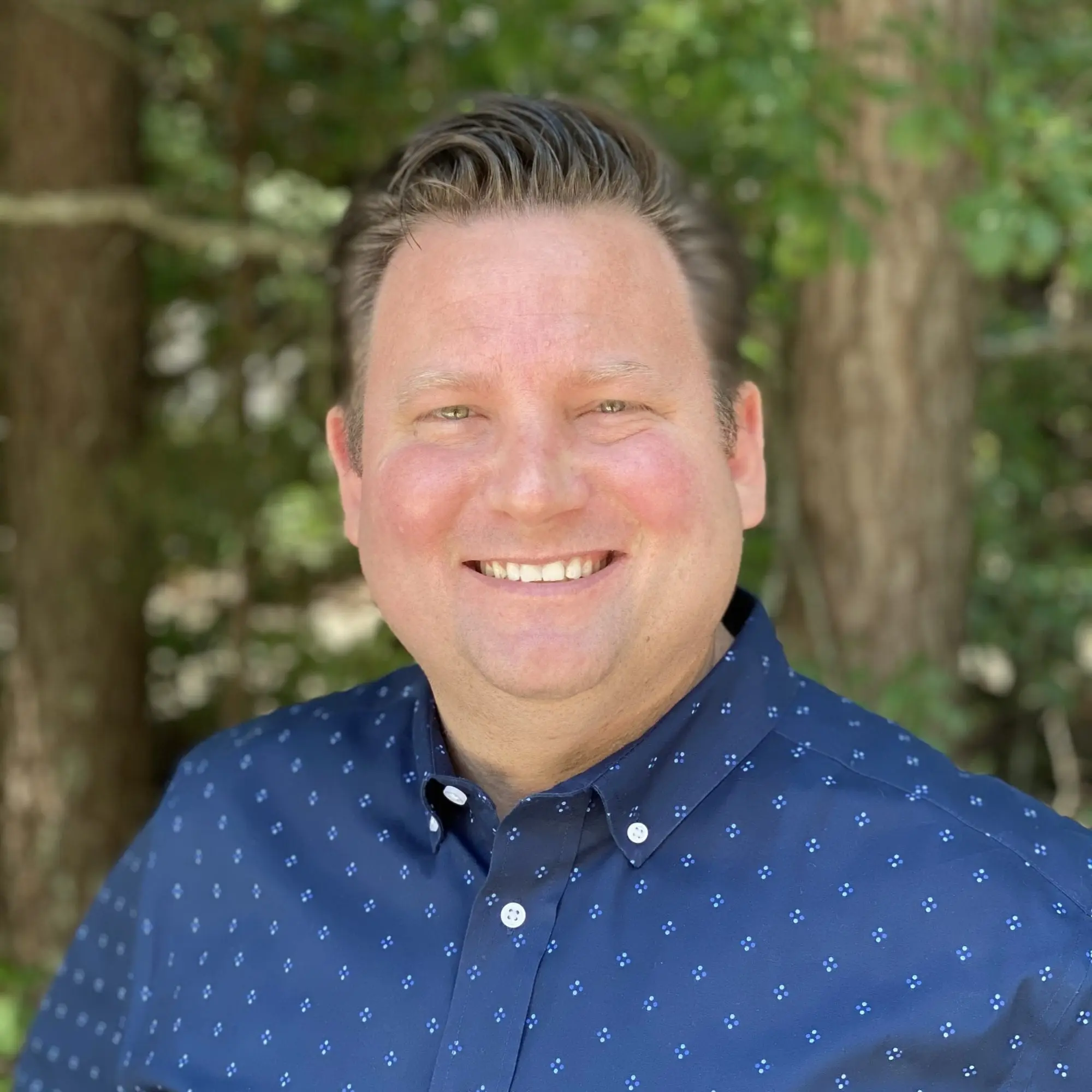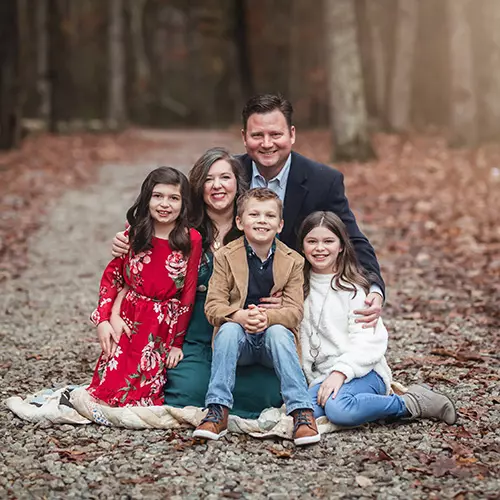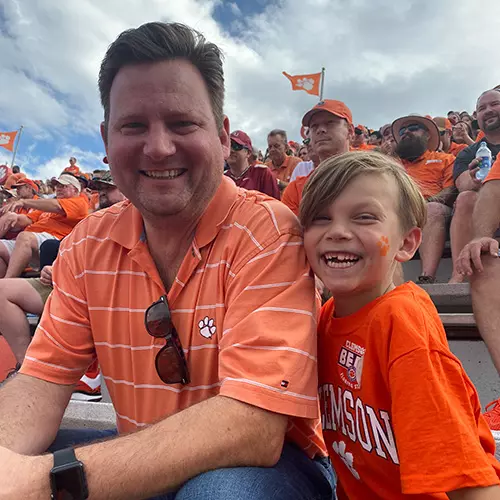[00:00:05] It’s time for Supply Chain Now Radio Broadcasting Life Supply chain Capital of the country. Atlanta, Georgia. Supply Chain Now Radio spotlight’s the best in all things supply chain the people, colleges, the best practices and the critical issues of the day. And now here are your hosts.
[00:00:29] Hey, good afternoon. Scott Luton here with you libeled supply chain. Now welcome back to the show. On today’s show, we’re speaking with one of the world’s leading robotics firms. Stay tuned as we look to increase your Supply chain Tech IQ. One quick programing note for get started here. You can find supply chain now wherever you get your podcast from Apple podcast, Spotify, YouTube, you name it. We’d love to have you subscribe so you don’t miss a single thing. Joining me today, my fearless and esteemed co-host on today’s show. As usual, Greg White Serial Supply chain Tech, your trusted advisor. Greg, how you doing?
[00:01:06] I’m doing great. I am glad that we are all present and accounted for. We’re getting this thing rolling and I’m really excited about this technology. So I’ve experienced some experience with similar technology from way, way back in the retail days. That’s right. And really set about the getaway guests, you know? Yeah.
[00:01:26] Well, I guess we’ve got here are making news and they continue to expand, including here in the States. So really excited to have Mark Masina, chief operating officer with Keith plus Dowson remotely Marquet doing very well.
[00:01:39] How are you?
[00:01:40] Fantastic. Great to have you. And then here in the studio with us, Rick D.C.s, the director of business development for the Americas for Geek Plus. Rick, how you doing? Great. Great. Happy to be here, Scott and Greg. All right. Well, we’re going to we’re going to dove right in. So, you know, before we start talking shop, before you start talking about the growth and innovation that E-Class is bringing to the market, let’s get the both of you. So, you know, Mark, let’s start with you. So tell us about where you’re from, a little about your upbringing and then let’s talk about your journey into your current role.
[00:02:12] Sure. Thanks for having us on today.
[00:02:15] So Mark Mishan, born and raised in the New England area, came up in the Boston area and then moved to southern New Hampshire for about twenty five years. Imagine Boston has become kind of a center of excellence for robotics of all sorts around Logistics and warehousing and this sort of thing. So it’s a good area to come up in. I went to the University of Marcello’s and spent 25 years in New England, had a lot of mountain biking and jet skiing, skiing in the mountain, the White Mountains there. It’s a great place to live.
[00:02:51] And then about four and a half years ago, I think I had some sort of a mental break and moved to Southern California. Just figured I’d give it a try. It turned out really well. It’s a nice area. And, you know, interestingly, there’s a lot of innovation in this area that’s just starting out. So we’ve got a few competitors and a few enemies in the area. Let’s say that we you know, we all we all sort of share the same talent pool. So it’s been very interesting and it’s great to be part of this ecosystem as a as a grows in Southern California and not have tech totally centered, say, in the Bay Area. Yes. So that’s a bit about me. You know, how he came up and my upbringing and schooling and that sort of thing.
[00:03:34] You mentioned the weather out there in southern Dallas. Probably his break, don’t you think? Twenty five years, two to four feet of snow a year was the break. Maybe, you know, you would think so.
[00:03:45] I really enjoyed snowmobiling and skiing and the cold never bothered me. But if you put me back in the cold today, I was just out in Arkansas and it was pretty close to, you know, snow and freezing. And it was a big baby out there, I think four years out on the West Coast.
[00:04:01] And you just get pretty soft pretty quickly. Yeah.
[00:04:05] Yeah, it’s the way the weather is fantastic. We have great sunsets every night. And, you know, it’s it’s just nothing I can say negative about that. That’s for sure.
[00:04:15] So, Mark, switching gears a bit. Tell us about your movie, your professional background, kind of Reader’s Digest. What what what did you do prior to your current role as CEO of.
[00:04:25] Sure, so cut. She’s over 20 years in engineering with its product, mostly in product, filament and operations around engineering. So now that covers design and development of all sorts of robotics for 20 years, whether it’s medical robotics, industrial robotics, Logistics and robotics, I’ve done everything from one day to these, you know, million dollar bowling allies or is to design for a million delivery drones and everything between warehouse ATDC Amar’s very low cost factory automation, very expensive factory automation led engineering teams, built engineering teams from the ground up and also managed to deployment software side, etc. So it’s kind of covered the gamut on the up on the engineering side and down on the operation side have had exposure to, you know, global engineering organizations where we need to roll out technologies, get them adopted by an organization, manage changing mindsets, all this sort of thing as well. So it’s been an interesting ride on the way to gate. Plus, I do have, you know, also relevant experience doing what we do here today, have designed, you know, and deploy robots in the thousands. And, you know, happy to be with Keith Plus where we’re 850 strong and have an R&D group of about 300 software and hardware engineers. So it’s it’s a really interesting place for me. And it’s a it’s a interesting culture where we’re a Beijing based company.
[00:06:05] Coming from, you know, working with Chinese companies as either a customer or as a developer, coming to lead some of our operations. It’s been very interesting.
[00:06:17] Yeah, we’re looking forward to learn learn a lot more about Geek Plus and the growth and the value that you bring into your clients here momentarily. But before we do that, Rick in studio with us here, Rick D.C.s, to listen. You know, you look a little better as well. So tell us about where you grew up. And then let’s also learn about some of the skeletons in your closet from a personal or professional standpoint.
[00:06:38] Sure, sure. So I’m a service brat, actually, when my dad was stationed in Japan and chased my mom around.
[00:06:49] So so I was I was born in Tokyo.
[00:06:52] And then as an American citizen and at a very young age, we came back to the states and and he was with the Air Force. So we moved around quite a bit in the US. So so so change is something that I’m very comfortable with and got to see a lot. But, you know, for for fun, as I got older, I actually obtained my commercial license for flying. So I’ve owned a few planes and the morenot license. Yes. Wow. Instrument. The whole thing. Wow. So. So, yeah, I was fortunate to actually work in the industry and be allowed to actually fly around instead of having to take commercial. So so that made traveling fun for a few years. And you know, basically I got in the industry in the mid 70s, start off in the fork truck industry and as you’re walking around warehouses, you notice that not everything’s on the ground. You start looking up in the air and you see these things called conveyers and sites. I ended up switching to that industry. And so I’ve been in the industries since then and seen a lot of changes, acquisitions mostly and mergers and a lot of technology.
[00:08:07] You know, even before they recalled what they are goods to person, before it was just there’s an a_s_r_ system and a crane and it brought something out. It took what you needed, then went back. Right. So same thing with a DVD. And it’s been an interesting during a technology wise and and how it eventually migrated over to software, which to me has made it a lot more interesting. You know, it’s because it’s not just steel anymore. So it was just. And then coming the geek plus was kind of a natural thing. Where I was prior, we were basically selling other people’s similar type products. And and I wasn’t aware of geek class. And then when I started looking into it, realizing that like the sleeping giant. Yeah. That that, you know, is already making a lot of inroads outside of the US. It just piqued my curiosity. And of course. So he’s excited to be part of, you know, making something great. And that that’s all doing here. Absolutely.
[00:09:11] I don’t own quite a run. So let’s let’s shift gears. Let’s talk more for the two, three audience members that may not have heard of Geek. Plus, let’s make sure they know what the company does and and how the company is. Bringing change. Industry Smart. I’ll start with you.
[00:09:29] So keep +S established in 2015. I think the industry recognized how Agee’s had impacted e-commerce. One of the world’s biggest e-commerce players relies heavily on automation and automation in the Logistics space is really traditionally has been heavy iron, I call it. So a lot of convenience, but a high tech conveyance but still commands a lot of fixed infrastructure ARAX or a SRS sort of thing. And when H.P.D. Kind of hit the hit the floor, it changed the way the operations worked. You know, when everybody in e-commerce suddenly noticed this because the ability to deliver packages, you know, the goal I think for the world is deliver packages instantly. And everybody is approaching, you know, two day delivery, same day delivery. Soon it’ll be half hour delivery. So it’s it’s really a technology that enables e-commerce and Logistics in general. So, you know, the company, like I say, was founded in 2015 in Beijing. And our goal is to deliver this technology to three people, eCom, etc. Anybody who moves something in a warehouse or even on a factory floor. We also have, you know, sorting robots. We’ve got a very broad spectrum of solutions and we continue to develop more with our 300 strong R&D team.
[00:10:59] Mm hmm. Wow. And Rick, what else would you add to that in terms of what Geek Plus does?
[00:11:05] So so as Mark mentioned, we’re really more of a software company. We have a very, very robust package that basically does a lot of optimization. And we just happen to have these robots that help facilitate that. We basically we could take a customer’s orders for the day and be sure that we’re not duplicating effort constantly. You know, looking at what’s coming in for the day, giving visibility into what we do and what the what the customer is doing so they can actually plan their labor better, especially with a lot of companies using temps sometimes when they’re peak and Trident can plan, you know, when can I send these people home or are we going to end up working overtime today? So so that that pieces is very extensive. And I’ll tell you, that’s having been in the industry, that’s what actually kind of separates us from the other companies there.
[00:12:04] They make robots and they need somebody with software to make their system work.
[00:12:08] And we’re kind of the total package abolutely. Right. I guess your intelligence is what really I mean, that the technology that you’ve built, the software technology you’ve built is really what drives the robots rather than vise versa.
[00:12:25] Yeah. Yeah, that’s that’s true. I can speak to that. You know, the the software itself we see, you know, to the forecki an improvement in efficiency and in density. There’s a lot of levers you can pull with the software. So when you have fixed infrastructure, you know, the design has to be right and it has to fit your order, your your business that day. But business has changed quite a bit now, especially in e-commerce. Whatever’s popular that month or that day can can require different infrastructure, but you can’t do that with heavy iron. So now our software user, they either constantly balance and optimize the inventory flows throughout mapping, et cetera. There’s very little intelligence on the robot. Now, I know our hardware guys would kill me if they heard me say that, but in reality, it’s it’s an eye Auty device, right?
[00:13:16] It’s it’s a sensor. It’s got various sensors and it’s it’s an actuate or the real intelligence is in our cloud infrastructure, in the platform itself. And that’s where we see increased efficiency in the human aspect and increased efficiency in the storage density. So as eCom and various players try to drive closer and closer to their customer to shorten the last mile, you need the higher density, you need higher efficiency from your people and you need the flexibility to deal with an ever changing SKU mix.
[00:13:48] Yeah, we’ll put Mark. So, Rick, I want to pose a different question to so kind of broaden back out from now that we have a sense of what Keith plus does and and some innovation that is leading. Let’s broaden back out to the the industry itself in the current landscape of some of the challenges that that companies are facing.
[00:14:08] Speak to that a little bit, Rick. Sure. So something. Excuse me. The the biggest thing that that when we first meet with clients is, is getting the data and what are we designing for? And, you know, and the hot topic is my peak, right. So some companies are non peaks compared to peak. I’ve had applications where it’s it’s 11x, so, so trying to build a system around eleven X one time a year, maybe four for a few weeks out of the month. Ryder out of the year right now and then being able to staff it for that for that same peak. It’s hard to do the RLA on that. But but on the flip side, they can’t afford not to. Right. So and when they decide that they need to do that, it’s usually because they had a very painful season recently.
[00:15:00] Right. So so then the other issue is I can’t wait two, three years to get caught up to what we went through just recently. So. So the drivers are hot. How do we how do we implement something, a solution that’s a reasonable cost, that is scalable, flexible and can be implemented quickly? Right. If you have to build a building and you have to, you know, again, design this very, very complex, complicated, you know, heavy steel lot, male miles, a conveyor, high speed station. The problem is during the non-peak, you almost have to staff it as if it was peak. Right. Just just to make it work. So. So that has been the big driver behind the technology of a DVD, an autonomous mobile robots is the ability to basically I can resize this constantly.
[00:15:54] And I think, you know, that’s a really interesting perspective that even as we’ve talked about in the pre-show, I’ve got a long history with even this kind of robotics. All the way back to Staples. But I never really thought about it the way you’re describing it, which is essentially re-engineering the warehouse or fulfillment center every time volume or needs change because these robots can literally move the racking and whatnot around. You can you can have a lot more responsive capabilities and you don’t have all the heavy iron and as you’re talking about. But that limits the configurations that you can that you can have on a day to day or week to week or so, like ultimate dynamic flexibility. It really is. Right.
[00:16:41] So, Mark, bringing you back in as we’re speaking to the challenges that landscape of industry today, what else would you add to that?
[00:16:50] You know, if you talk to any operations manager in an FC, the first thing that they’ll tell you is it’s hard to find people who want to do this job. All right. Typically, you have people who are, you know, walking 10 to 15 miles per day. They’re doing a job that’s not really glamorous. It’s it’s not a career. It’s a job. So as soon as somebody hits the market and says, hey, we’ll offer you another dollar an hour or 50 cents an hour. Labor leaves. They just fill this move to the next one because it doesn’t require training and they can just go to the next better paying job. So one of the biggest challenges that our clients face is the scarcity of labor, keeping labor, this sort of thing. On top of that, they have very little flexibility with traditional systems. There’s very little you can do to improve your operations. You may get a little better once you set up a heavy iron centric fulfillment center or DC, but there’s not much you can do. So now they look at our solution and you know, the person they notices it addresses the labor because generally it’s you’re still dealing with the same labor pool.
[00:17:58] But if you’re an employee and you’re looking at the landscape and you can stand and just to picking which humans are really good at picking, we’re not good at it looking for things. So if you ever go to the grocery store, which everybody does, you know what it’s like when you go to try to find, you know, a jar of jam you can spend 10 minutes looking for. It takes a second to pull it off the shelf. So, you know, we do the same thing. We do an optimization right there. We bring the jam to you. All right. So this is already making their life easier. People are great at picking things. So we let people do what they’re good at. The other pieces, you know, as far as the operation of the FC or the D.C. We have a lot of levers we can pull. So with this system, at first glance, it’s easy to see, OK? You know, what we do is we optimize, we heat map your inventory so that the things that are most popular are closest to humans.
[00:18:53] So the robots can make a short, quick route and the slow movers we put off where they can be just stored. No big deal. That’s not really all that magical anymore. There’s other things we can do, right? So we can say, how do we store your inventory? If you’re a three P.l.
[00:19:10] Or if you’re a DC, there’s different ways you may want to store things. So we may want to do discrete storage are our storage racks. Our pods have bins that the goods are stored in and the goods to person products that we have. And we can say, you know, one rack is an entire SKU. So maybe you’re selling apparel and you want to have, you know, one size of jeans only on one rack so that it’s easy to pick your picker pick fast. Or if you’re an e-com, you might say, well, I want a super high density distribution center because I want to have a very small footprint. I want to be in downtown New York on the 22nd floor of an office building with these robots, because that’s where I found cheap space. Well, we can do that. We give you a very high density by saying, OK, in each bean, we’re going to put a golf ball, a golf tee, a magic marker and an eraser. All of these things are when we bring them into a Cuba scan, very different so that when your picker picks them, it’s very easy for them to reach into a bin and pick it. But the benefit aside from that is that you can store randomly or pseudo randomly. The software will direct where we’re putting things. So you get a great distribution of products throughout your throughout your field. So no matter what you’re picking, it’s always close by and you’re speak to there’s a lot of levers you can pull.
[00:20:32] Right. You’re speaking to one of the megatrends out there that that urban Logistics urban fulfillment is so challenging for so many organizations.
[00:20:40] He had me jelly to me jam. Sorry.
[00:20:46] So, so seriously, Marc, I mean, it’s it’s interesting that you say that because that it’s that kind of story that really makes it hit home. I am barely allowed to go to the grocery store. And it is an hour long. It is an hour long escapade to do so. But I think that’s, you know, being an old old retailer, it it really resonates with me to bring obviously up the obvious things you talked about. Right. Keeping the the fast moving goods close, but also enabling that flexibility in in an operating center like a fulfillment center or a distribution center, whatever somebody happens to call it. Right. Enabling that flexibility is really critical these days. And, you know, we’ve kind of kind of touched on that a bit. And in the last couple discussions here, and I think I’d like to explore that a little bit about the necessity of flexibility in how you. Facilitate flexibility. And why? Because you see a lot of companies who face really complex scenarios. What is driving the need for flexibility among the retailers and e-commerce companies and other companies that you’re working with these days?
[00:22:07] So I’ll mention, you know, Mark brought up. And and Scott as well. The urban facility. So there’s a lot of companies that start out and and they they take a building and they build out and eventually it gets to be too small. Right. So one of their other options or one of their options is, well, let’s find another building and start up another operation and and we’ll have two operations. And companies do this to do they finally get three, four or five office in their time? Well, maybe we need to consolidate. Well, if in the meantime, you’ve put in all this infrastructure. Right. This conveyor. Right. That was fixed in your time with all these big assets that they’re seeing in each of these spaces. And now you’re looking at consolidation, you’re talking everything new and everything being left behind. Right. Whereas this kind of technology, I can take that whole system, put it on a truck and bring it somewhere else as my business grows. So I’m so I’m I’m always kind of staying consolidated. And I and I always have that option. But if I am a multi-site and I’m busier in one location than another, I can send some of those assets to that other location to handle their peaks when I have other items not being used.
[00:23:28] So are you seeing some are you seeing companies do some of that?
[00:23:31] The three Pelzer are actually taking ownership of their own, saying, well, I don’t want to say I’ve got, you know, 20 robots over here and 10 over here and 30 over here.
[00:23:43] I want to say, as an organization, I have one hundred and and I’m going to manage where where the work goes and who my customers are going to how they’re gonna be serviced. So can I ask a dumb question when you when you laid it out, so-called robots here, robot to. But what is how does organizations ensure visibility of where they have those Roope bots deployed? I’m thinking of like mission control from a NASA perspective, where you of see things laid out across geographic electronic map. How do you all offer that visibility to your clients?
[00:24:18] Sure. So you want to get that, Mark?
[00:24:22] Sure. I can take them. So, you know, we have different operating models. We can operate with a server on premise or we can operate with a server in the cloud. It depends on the desire of our client. Some some of our clients at all costs do not want to have anything on the club. They want it all controlled on their own private network because they may be. And everybody has the fear that they can be reporting something to one party. But the reality is, you know, the data doesn’t lie. So if you’re looking at the productivity of bots, if somebody can look into your data, then they’re very concerned about that. Now we we have all sorts of security, etc., etc. But this is still very uncomfortable for a lot of clients. So they prefer to have an on premise. We do have and it seems to be proportional to the age of the client. How how concerned they are about this. So are our new or e-commerce customers that are coming coming to us. They’re very open to being on the cloud where our really well-established incomes are or are established. Clients are a little more sensitive to putting things on the cloud. But being on the cloud enables you to no one monitor your assets in real time, monitor the health of the assets, proactively schedule service because we know heuristics on the robots and all of this is available on prem. But if you’re thinking us as if you were a major three P.l. And you had say eight to ten thousand robots out there, it would behoove you to have a dedicated central now network operation center similar to what you would have for your own your network operations.
[00:26:06] But this would be a robotics network like find my iPhone. JV’s. Right? Right.
[00:26:13] And it’s kind of like these not tend to look more like mission control.
[00:26:17] Yeah. Than an iPhone or a much cooler is what you’re saying, right? Well, exactly.
[00:26:24] But the other thing, too, is because the larger companies have multiple sites, they don’t want 100 percent duplicate inventory. And I want those sites. Right. I mean, plus plus, they’re regional for a reason.
[00:26:36] So so their facilities are actually virtual that they consider themselves to be one big facility. And then through their own order management system or WME warehouse management system.
[00:26:49] They’ll determine which facility can I potentially ship at? And one box, right? Yeah. Even though it may be the one across the country. But if I can put it in one box, it’s still gonna be less expensive than me sending off multiple sites. So so so it’s not unusual for them to have this kind of enterprise view. Well, in that in that sense, they also know the same thing as what’s my capacity at each of these facilities. And again, that they’re seeing that there’s one is more busy than the other with a little planning. When the truck’s gone from one facility, the other, you can you can send these additional automation to that site. So. So we are seeing customers being more, like I said, an enterprise and being one platform that looks across all their facilities.
[00:27:36] And you see a lot of come in kind of a hub and spoke model as well. Right.
[00:27:40] There’s they they can I mean, maybe not your customers, but I I have seen and worked and designed networks where, you know, the lesser the volume is, the more centralized that inventory becomes sometimes. Right. So, I mean, from a pure mathematics standpoint, you kind of use the square root law and say it sales once a year. Don’t put it in in the remotest, most most accessible locations. You put it in a hub and you’ve got a maybe a facility that’s got a ton of slow movers, maybe almost all slow movers except for its local inventory position. So, Mark, you’re going to add some.
[00:28:21] I think you’re pretty. Hit it. Move it, move moving fast. Yeah, I will. Sorry. So I will I will add.
[00:28:30] I’ll just add that you know what’s happening in Logistics today with with some of our customers. It’s really fastening. So we have our layer of a–i and and how we manage our robot control and our own WME. But seeing when you talk about these broad, broad networks of distribution centers where more clients have multiple d.c’s across the states and sometimes across the world than how they knit together their orders and do transshipped and all sorts of these things, the a-I that’s going on to predictively move inventory to where a customer is expected to order it. It’s fascinating and that’s outside of what we do. So I don’t want to I don’t want to dedicate too much time to it. But technology is has such an impact on how orders are delivered and the end customer who’s receiving that box. It’s also seamless to them. So when you think about what we and all the companies in our landscape do, it’s it’s pretty amazing.
[00:29:26] Agreed. Well, and things are changing so fast, right? I mean, I think that you’d think about all the reasons that companies typically want flexibility. And you mentioned some of those earlier. You know, some of those are PEEKE or highly seasonal items. The proliferation of new products in retail, but also just the changing landscape of consumerism as well. Right. That constantly seems to be constantly evolving needs and wants and desires and and fickle and fashion of of consumers. You’ve got to be highly flexible to really respond to that. So I think we I think, you know, our listeners probably get a good idea of of what the current state, what the environment is. And some of the things that your customers and other retailers are responding to. So I’m fascinated to know, because you mentioned that there are a lot of different ways to approach this. So I’m fascinated to know what are these? I mean, you described it earlier, Mark, you know, bringing Brackin to the to the the picker. Right. But can you can you kind of, I don’t know, go through kind of a verbal flowchart of how this happens and and you know, what the robots are actually doing in the facility. And I know that you have a vast number of different types of controls. So they may be doing multiple things, but maybe the most popular case.
[00:30:56] Sure. Sure. So, you know, it’s hard to talk about. It’s hard to talk about a flowchart because it’s more like a neural network.
[00:31:05] Right now, what’s happening? So we can talk about pieces of it, but we’ve got we’ve got picking robots, moving robots case taking robots for trucks, sorting robots. So when you look at if we’re just kind of drill into goods to person, robots are picking series, you know, basically, I guess we could start at the start when you stand up your your DC or you’re filling. So all of the racks are installed, workstations, your robots, everything is dialed in and running. Now you go to fill. So as you fill, you can do a fast fill. You can do a more logical fill depending on your profile. We can control how all that happens. So where inventory is placed in the field, go back to my what I said earlier about do we do we do pseudo random, so do we do poorly directed, so do we do know dedicated racks to particular items that all happens on order. Fast forward now. You’re running your your your DC is full. An order comes in. The robot, the robot control system looks at the order data and it decides how it’s going to batch your orders, how your workflows are going to happen, etc. And it routes things automatically to the right workstation so that the robot goes, picks up the pod, brings it to the workstation. The order is picked. The bean itself is scanned. The order is scanned. So we have 100 percent accuracy. It’s we can do put to light. So it’s put to the correct. Again, percent accuracy on the on the put side. And then as this happens time and time again throughout the day or the first months of Operation A.I. is looking at at the at the items in inventory and it’s constantly rebalancing.
[00:32:52] So robots that are busy with assigned paths to go deliver goods are then used to reshuffle the inventory in your field so that your field is always optimized. There’s other other bits and pieces that are happening there as well. So charging, you know, a lot of questions. We have one of the more popular questions. What about battery life? The answer is the battery life is the life of the battery. Ten years. So. And the why? Why is it 10 years? Because the battery never goes down. All right. We the robots, when they’re not busy doing those other things, they will opportunistically go take a drink. So they never go from, you know, full to empty. Right. You just get a little bit low. And the robot, when it’s got time, it goes and spends five, 10 minutes at the charger and then back off doing his thing.
[00:33:42] Do they talk when they’re at the at the church? A lot of cool. No. I mean, I think that that’s a really do harm a little bit.
[00:33:51] I think that’s a really interesting thing that these things are so intelligent that they know when they need to charge them.
[00:33:59] Mark, I like you. I like your your imagery. Can you make it easy for folks, not technology folks like me. I’ll be the first to you. I’m not a technologist other than what my kids teach me to used. You paint a picture. That’s easy, folks. Understand. So let’s continue down this neural framework that you kind of laid out. Markum and blatantly still use your term there. Let’s let’s kind of back up now that we kind of get a sense of what the robots are doing in the warehouse. Let’s kind of back up and let’s talk about how the solutions are developed. Rick, I want to start with you. How are these solutions being developed?
[00:34:34] So so one of the things that that that we try to do is help customers with what they don’t know. Right. So so it always helps to to walk around and see how are they doing things today. And because one thing you don’t want to first of all, time, what they’re doing is not not the best threat. Right. Right. You know, and so. So first you want to observe. Right. And because one of the things that we’re competing against with today is, you know, we talk about goods to person. Right. We’re bringing the jam to us. The other solutions that that are being considered is what we call orders to person or or bots on a leash. In other words, you hear. You know, you go in your existing facility and instead of you pushing carts around, we’re going to basically have the carts follow you around. And the problem with that is most companies don’t do a lot of slotting or changing of their inventory. They a lot of them look at slotting software and they they they talk a good plan.
[00:35:34] And and actually they do it maybe once and maybe twice and realize the amount of work it takes to re slot. And then you have these peaks. Right. Of new products and SKU proliferation. It’s all of a sudden you start the day and all the bots and all the people are in one aisle. Right. They think they can’t move around each other. They’re all jammed together. So so. So what we do is basically by observing and asking that question, is this ever a problem for you? And you’ll find that the majority the time they’ll say yes on picking for us can be a constraint because of trying to balance the workload both in people and technology. So, so so taking that and looking at the data, you know, one of the things that our A.I. does is it balances the orders of the or the items to a workstation so that we’re delivering and we’re we’re batching orders and one workstation that have a common need. Right. And then doing that in another. So. So all day long, we’re balancing this work.
[00:36:36] So by batching, Rick, you mean. Accumulating things that are often ordered together, is that what you mean or do you mean well. So so batching mean a whole slew an item?
[00:36:48] When, when, when the when the when the customer’s looking at their customer orders, right. Yeah. We can they download to us and we look at that and we optimize not only how we bring things, but how we grouped the orders together. So, so, so we try to see how many orders are similar in some way or other. Right. So that way when we retrieve something we bring out the box of jam. Well, hopefully we’re almost taking all the whole box rather than bringing out the box of jam 20 times. Right. Right. So. So I might be picking a group of 20 orders. And if they all coincidentally need the same jam, I’ve I’ve really increased my productivity and my accuracy to right because I’m I’m only doing things at one time. Right. So. So that is the other part of what we can do, even though because the other technologies I mentioned the orders to person, usually they’re only picking one or two orders at a time. So even though they are batching or waving, it’s limited in size. I mean you can send a string of of know bots and follow them in that purse, can stand there and fill these multiple orders. But you’re still basically doing a discrete order. Right. So so so that’s that’s where the bigger advantage of goods to person is.
[00:38:08] So so again, to look at your to answer your question, we look at, you know, what what what are the number of SKUs, what how many orders a day, how many average lines for order? And then that kind of dictates the number of stations because we can do a certain velocity per workstation and and kind of work it backwards so we can come up with solutions actually fairly quickly and kind of size it five years to come up with these solutions. It’s as good as the data, right? Good information. So if they have if they have good data, we ask for the order for Keith non-peak. You know, the cube of what they have their item master, which which basically says here’s here’s what we have. Here’s the size of it. Here’s how much we sell. Now we have a lot of people that can come analyze that data and we can drive up the size of the solution. And how many devices are going to need to meet their needs? Charles speaking tongue in cheek because in our pre-show conversations, understand ya don’t move very quickly in terms of several months of developing the solutions, is that right? So so. Ah, yeah. So so our design, our concepts can be done very quickly. And as far as deploying because it’s there isn’t any fixed infrastructure. Our factory is is highly automated itself self. We have robots building robots. So so we actually have a high production capability and we can do something literally in a matter of weeks compared to months or even years of what it might take for something of the same capacity.
[00:39:41] And then what you’re doing is an intra day reconfiguration of the facility. So if raspberry jam is the hot item today and you want to avoid this jam up, if you will, in the in that aisle. He said champion or you know, if you want to avoid that, that jam of of of people and robots trying to go get it, you can bring all the raspberry jam knowing what that day, that entire day of picking and order fulfillment looks like and then and then reconfigure the next day of strawberry jam happens to be the hottest item. Well, not even the next day.
[00:40:16] It’s because as you’re right, even in the way as I look at the order, if raspberry happens to be what I’m picking, but I know later on the day I’m going to need strawberry, I have these robots that are available that will actually move strawberry towards the front. So when I when I’m ready to have the need for my travel time to retrieve, it is greatly reduced. So so not only are we moving things to the workers, we’re also moving things closer to the workers, knowing that we’re going to need it sooner than later. And then when we look at the order or the the the the storage unit and determine that we won’t need it for the rest of the day, we actually will put it further back in the system.
[00:40:57] And you and you can avoid running into the strawberry jam as you’re moving the raspberry jam back to the back. I mean, really that I mean, that’s so that’s incredibly valuable.
[00:41:06] It really it really is. I need I need a schematic here. That’s why you bring. Yes. Martellus, bring you back in before we move. You know, Rick’s been sharing with us kind of how the solutions developed. Anything else add there before we move to some of the impact.
[00:41:25] I think your question is about, you know, the customer journey, so to speak. And when we when we start talking to customers, we have in some cases there’s a really great discussion and education that happens because they’re so used to operation because they as they’ve known them and they’ve seen the technology that they’ve heard about it. But we sort of start talking about our solutions. You know, we’ve got a one week turn to develop a budgetary estimate with a high level overview of the operation. Ours our system can be set up or running, usually anywhere between three and six months, depending on the size and complexity of the system, whether it’s just goods to person or maybe you don’t want there in your operation. So using our sorting robots as well.
[00:42:14] Atv for trucks, etc.. So, you know, we’ve got a lot of solutions and they can be stood up very quickly once the system is up and running. It’s very, very flexible. So when they start to realize how impactful it is for their operations and how quickly they can have it, you know, the next surprise they have is surprisingly low cost. All right. But some of the other benefits that are we’re very customer focused organization.
[00:42:45] Our CEO is is all about, you know, what can we do to delight the customer? So give me an example of where we can improve operations through innovation. If we’ve got customers who have high value items, medical devices or jewelry, these sorts of things, and taking inventory is really important to them.
[00:43:06] So rather than manually take inventory, we attach RFID to their products because it’s a small incremental cost to do that. And the robots can continuously cycle through an RFID reader and constantly take inventory. Wow.
[00:43:23] So anything keeping human beings from taking inventory is, I mean, seriously. I mean, I I’ve done a number of studies and the number of errors introduced by humans taking in and counting inventory is like four times the amount of corrections made.
[00:43:42] So so so we can actually take inventory before and after an item is picked and verify completely, automatically, completely without any human error. We just drive through a scanner on our regular path and we verify we can verify this one.
[00:44:00] So. All right. So in terms of of how robotic solutions are impacting your customers, we’ve talked about flexibility a good bit. Right now we’ve talked about now better, better inventory management. Rick spoke to better warehouse space optimization. Yeah, but what else? Yeah. Rick, what else would you add? Well, we’re talking about how the solutions are impacting business. What else would you add to that list?
[00:44:24] So the other big thing is egress. Again, not having this fixed infrastructure, you know, that you don’t have these low areas to make sure you don’t hit your head or you’re not climbing over ladders to get from one area to the other. Especially in large operations where there’s a lot of packing stations, one of the biggest challenges is how do I get my material in cardboard boxes and filler and my people and get the get the product out, but yet not have to take up so much real estate that that, you know, we’re not able to fit it in the space that we have available. Plus, again, this peak, when you non-peak, I might have 20 workstations for packing, but my peak, I might need 200. Right. So. So by having these systems that allow you to easily, you know, walk through an area and, you know and I know, you know, most people now are aware that there’s a lot of safety devices in the units that make it, you know, people friendly and and fork truck friendly. And they’re aware. And and, you know, one of the things you touched on earlier about the robots, they don’t crash. Right. They know where they they we actually have to let two layers of software. One layer is, is all robots, robots talking to each other. Robots knowing when to charge, knowing which robots close to do a task. And then our next layer software is all the A.I. and all the tasks, the picking, the packing. So so they and we can plan for certain areas that if if you need more egress than the others, we can ask the robots to slow down before you cross an aisle, for example. And so we can make it very interactive with people. Mm-Hmm.
[00:46:09] Mm-hmm. So Mark, before we can move on from this topic in terms of impact, I don’t like how you put it. It’s been a while since I’ve heard delighting customers. I mean I love that phrase. Mark. Mark what. What else. Birgit.
[00:46:26] I’ve had experience with a lot of the big integrators and solutions providers and typically what this is what we have.
[00:46:34] This is what the technology can do. And that’s that’s what you have to live with. With our system, the flexibility also yields a lot of a lot of flexibility in how we can satisfy the customer, how we can customize the application layer because we’re not focused solely on hardware. Hardware is very fundable. We can use it for lots of different things. It’s all in the software so we can customize applications, like Rick said, very easily, configure them and reconfigure them. So if an operator decides, hey, you know, I want to test out this scenario, we can simulate it, but we can also just stand it up directly, measure actual results very quickly. It’s not like we have to unbolt things from the floor to major surgery on an on physical things. It’s much more it’s much more virtual money.
[00:47:28] So let’s talk about it in our pre-show conversations. We talked a lot about and Rick, you just spoke to a few minutes ago about just how critical that data, the role data plays in good data. Can you elaborate a little more on that? How important it is for these solutions, Rick?
[00:47:44] Sure. So so one of the one of the challenges for customers, as I know what I did today, I know how we did during our last peak. Is it going to be busier? And what it what I’m going to do for five years, so if I’m looking at that, try and resolve the problem, right. Do I need to commit for that five years? Well, so it’s a week. Take that data. And of course, we all know some companies use 3 percent, 5 percent. You know, they was always look at growth. So this gives back again to that the flexibility that you don’t have to commit to that you can based on how you’re doing. Maybe, maybe year, too, was kind of flat. So you didn’t buy the infrastructure of that. Right. So so but that data, again, is something that we know is dynamic. Right. Because. Because, again, it’s it’s a crystal ball. So so the. So it just gives that ability for the customer to say, do I do I need to commit to this based on my data? Or can I, you know, can can we develop a roadmap together and a plan that says, OK, if I had this peak and I can actually get robots know additional robots as a service or a rental period to get me through my through that peak, and then I could decide, do I want to actually add that many more robots or half of that or so. So, again, it gives you the the the the versatility, if you will, of of being able to change to my business. Right. And I can tell you, a lot of lot of companies are multi brand within themselves. Right. They have different labels that they have and sometimes they sell off one. And so maybe they’re their volume will go down. Well, they can potentially take again those other assets. And you don’t say, hey, do you want maybe this with it?
[00:49:39] Yeah, right.
[00:49:40] I mean, if you sell a label off. Right. And and you understand its its product flow, then you could sell the infrastructure that supports it that’s already programed to support it right along with it. Right. So we really have huge value add for that.
[00:49:56] So we would just have to stand up a site license and do their if they have a different workflow. But, but you can take the same way that they’re taking that business and then literally spin it off, you know, bots and all. And the inventory as is just just take it and stand it up and and be running a new business very quickly. Yeah. Wow. That’s it.
[00:50:19] We can have our robots. We can actually have our robots load into a truck so we can take all your inventory on the racks, moving into a truck to move in there themselves and you stand up at your new DC.
[00:50:34] I am going to have to see that. You have to do a video of that. The migration of bots. Yes. Right.
[00:50:41] I love it. Well, I like going back to what Rick was talking about, bots, building bots. And the factor that that that’s fascinated me for the rental.
[00:50:48] The ability of raynham, too, if you need to flex up, is if there’s not enough flexibility here to flex up. I think what you were saying is they can rent them from new right for that peak temporarily and then and not be committed to again purchasing or owning.
[00:51:03] Yeah. And and really it’s not so much about the owning, it’s it’s when you have something static for a while, your risk it is going to work when I need it again. Right. Or did are the maintenance people going to steal parts off of it? I’m not going to know it. What are you doing? They don’t floorspace. Right. And so so we we can actually tie their own maintenance into it. And, you know, different programs that that assures uptime.
[00:51:30] And you’re kind of speaking to this notion of smart Logistics is part of what you’re speaking to. Right. Mark, can you elaborate when we talk about smart Logistics what we’re talking about?
[00:51:42] So it it’s to go on with what Rick was saying, we you know, we can cycle things in and out if we need to. We can do wrasse, we can do rentals, we can do leasing.
[00:51:52] So if you look at an operation, we say, OK, we don’t really want to develop for peak and have all the cost of the robots. But we have a fleet of say, you know, 50 percent of what we think we need a peak. You have the RACS inventory. So you can fill all of that when you need it. And then we just literally pour in robots as you need. And so it gives us it gives the ability a very flexible in the operation. We can do programing so that if you do have a fleet that is under utilized, we can rotate them in and out automatically so that the robots never go idle for very long. It has an impact on battery life if they do. So there’s a lot of intelligence in the system that enables up.
[00:52:36] And of course, with the build your skill up, skill down, some of the cost efficiencies that are there. That’s one of the advantages as well.
[00:52:44] No doubt. Absolutely.
[00:52:45] All right. So let’s shift gears as we start to kind of move in the wrap up mode here shortly. So we’ve touched on it throughout the conversation. And Rick, I’ll start with you. Speak to the A&A that’s present here and try to put it for us non technologist. It put it in layman’s terms. What is this list?
[00:53:09] Well, it’s basically being preemptive, right. For for some time, as you can imagine, when you’re back in your operations days, we would talk about reports. Right. That was Crystal and sequel. And we get these reports and they would tell us how we did how we hurt the company today.
[00:53:28] Right. How did we do, you know? And then there started to be this this conversation of, well, now we want real time reporting. Right. So so we look at real time. But but what is real time?
[00:53:42] Well, it’s within 10 minutes or within an hour. Right. But but it isn’t it isn’t preemptive. Right. It’s still telling you. How did I just do that? More rapid fire response. Right. I know what I did in the last hour now compared to how I did yesterday. Right. So so were they I what it’s doing. It’s being preemptive and looking ahead as to what’s happening for the day. Right. So. So if I know that that that what when when Rick is in this workstation, he can normally do X per hour. Right. Well, I can look say I can look at that and look at a dashboard and say, well, for some reason, Rick’s only doing half of his X today. What’s going on? I can go and say, well, he’s wearing a sling. He did hurt himself.
[00:54:29] A jetski. Yeah. Yeah, he’s doing everything. One hardest thing one handed today. Right. So so eat first. This is so nice.
[00:54:36] See that? I need to either ask Rick to do something else today or or put somebody else in. Right. Well, same thing. So so this this A.I. is all about planning. So just like I mentioned earlier, we can actually look ahead into orders. We’re able to to move inventory that we know we’re going to need closer so we can minimize the travel time so we can assure that there’s no one’s ever waiting for product. And we can also anticipate. When will I be done today? Will I? You know, we have a cut off at 2 o’clock. Are we gonna make that cut off or we’re gonna meet our SLA? Is our ah service level agreements to get this product into that truck so it can be there tomorrow and in five if I’m not. What do I need to do? You know, it allows you to again be be preemptive and do planning. So that’s that’s really what what I is about constantly learning some of the differences.
[00:55:33] We just talked about the brand versus brand B, this is how we need to treat these respective brands. So it’s just constantly learning the intricacies of operation. Mm hmm. And so there are so many aspects that they can look at. It just never forgets what a human would otherwise learn. Right. And it can. And it can sustain a lot more memory and a lot more learning than a human can can possibly recall.
[00:56:01] So, Mark, before we kind of shift gears over into Keith plus and your involvement and Mode X, well, what would we miss?
[00:56:11] You know, I think A.I. is easy to to describe this way. So there’s algorithmic and there’s a AI algorithm that would refer to a robot as carrying a payload. And in order to not drop the payload, we monitor the center of gravity of the payload. So algorithm, we will control the acceleration and deceleration of that robot A.I.. Is it a bit more? Well, it’s a lot more complex. And the easiest way to to draw an analogy is to say if you were really good Industrial engineer or a Logistics Logistics person, if you were to look at any single order you can in a few moments come up with a path and you’d be pretty, pretty good at it. The A.I. does that time and time and time again, and it’s constantly optimizing so that we see an improvement of about 10 to 15 percent from the day the system goes live to the end of the first month and a half. That’s because the system is learning and it’s optimizing. Every time it looks at a route, it’s optimizing. So it’s optimizing based on the dynamics of the of the of the pod being carried or the route of a sorting robot, etc., etc. So it’s always optimizing. So it does what a person does, which is highly complex thinking and it does what a person does and that it learns things get better. It just does what a person does in milliseconds as opposed to seconds.
[00:57:47] Hundreds of millions of times. Yeah. Yes.
[00:57:51] So we can run thousands of robots at a time. When you look at a DC, we may have replaced all the conveyor with sorting robots. All of the inventory is carried by our picking robots and we’ve got four trucks are doing replan. So there’s no way we’re optimizing across a number of different different species of robots.
[00:58:14] All right. So as we start to wrap up here, Mode X, the Western Hemisphere’s largest supply chain trade show. Thirty five thousand attendees come into Atlanta. I know that ya are gonna be at Buth sixty six. Ninety six, the little homework there. So tell us what you’re gonna be demonstrating products with some robots in the booth with us. Absolutely. You’ll see basically all the technologies we talked about today.
[00:58:40] And and and some because we don’t just move big shelving units, we move TOTE’s and individual pieces. And of course, you’ll get to meet the team.
[00:58:52] Outstanding Tonka toys for Logistics. That’s what I think of when I think of Moto X, right. I mean, it’s it’s you can watch it happen, right? Absolutely fascinating.
[00:59:02] And Margaret, wait, will you be with us here in the land as well?
[00:59:07] I will. I’ll be there. We’ll have. I’ll be accompanied by a lot of different robots.
[00:59:11] We’ve got four trucks sorting robots, case picking, moving, picking. So we’ve had all these different robots. You’ll have a chance to to lay eyes on most of them will be in action. So you get an idea to see how quiet they are and understand the dynamics of how they work. It’s really a nice thing to see when you come up to the booth and see everything moving and hope. I hope that people come with questions.
[00:59:35] Mm hmm. Well, I can tell you, I feel like I’ve already seen it. I love it. I love how you describe the product. I mean, you know, I think half the battle when it comes to growing and especially technology solutions is being able to simply explain a thought where a third grader could understand how things work. And you clearly that’s some the secret sauce that you all have identified. Looking forward to geek. Plus at Mode X.. Again, for our audience. If you’re here, if you’re one of thirty five thousand folks at show check. Plus out at Buth sixty six ninety six. OK. So final question, the toughest question of the day. And Rick, we’ll start with you. How can folks learn more about Geek Plus and how can they connect with you?
[01:00:17] Sure. You can see us on our Web site, which is geek plus robotics dot com. And of course, you see his. He is a motets. You can go. Our army e-mails are real simple. I’m Rickett geek plus dot com and market as market geek plus dot com. You’re you’re welcome to send us email. Our office, our corporate office is going to be in San Diego where where Mark is. We will eventually have a demo center there. So not can you. You know, you don’t need to wait for a trade show to see us.
[01:00:49] If you’d like to see us and go to San Diego, go to San Diego.
[01:00:53] Yeah, make sure you pack appropriately. I’m here in Atlanta. So, you know, we can take those phone calls a little bit earlier in the day. And we do cover all of the Americas from our office. That’s South Central and North America. Outstanding.
[01:01:08] That is that is our most comprehensive answer. That question really, really had several Monte’s better than I. So, Mark, I’m not sure what else you could add to that other than come check me out of that mode X as well, right?
[01:01:20] Yeah, that’s it. You know, I love to talk about the tech.
[01:01:23] It’s much deeper than we have time for and there’s lots of lots of different applications. So, you know, I’m happy to have people reach out Linked-In or directly by e-mail. And you can go to our Web site, Keith, plus dot com. Absolutely. Happy to have a discussion. You kind of talk tech with people. So, you know, Scott and Greg, I really appreciate the opportunity to chat with you guys.
[01:01:45] Certainly. Our pleasure. That’s right. Fascinating stuff. And we may be able I know you are going to be extremely busy doing it throughout mutex. We may be able to conduct a second episode live from what will be the center of the Supply chain universe. We’ll see. Stay tuned. You think we could get a robot?
[01:02:01] Oh, now you’re talking.
[01:02:05] You know, the center of the Supply chain universe for us is it’s in San Diego here. We’ve got 10000 square feet our room and I’m surrounded by creates a robot.
[01:02:14] So I’m hoping that people will come and visit us and see them in action in their natural habitat.
[01:02:20] Natural habitat. I love it.
[01:02:22] All right. Big thanks to our guests here today on Supply chain. Now we’ve been talking with Mark Masina, chief operating officer with Geek Plus and his colleague, Rick Dees, Fiesta director, business element for the Americas with D-plus as well. Mark, Eric, thanks so much.
[01:02:38] Thanks, gentlemen. Thank you.
[01:02:39] Yeah. All right, so to our audience. Be sure to check out our events and webinar tabs in particular on Supply Chain Now Radio dot com. We’ve got a variety of in-person and virtual events coming up with partners around the world from E.M.T. Orders events to the Automotive Industry Action Group, the George Logistics Summit resiliant 360, Moto X. Much, much more if you can’t find something there. If you’ve got a question, you can hit up our CMO at Amanda at Supply Chain Now Radio dot com or we’re very active on Twitter, especially Greg at Gregory S. White. Let him know all the ills in the Supply chain world. Big thanks once again to our guests. I hope you all are audience enjoyed this conversation as much as we did. Yeah, I’m I’m really leaving this with so much of a better understanding of of robotics and how these systems come about.
[01:03:26] Wait till you see it. I mean, it is absolutely fastening the coordination that we talked about here. I mean, it’s one thing to visualize it. It’s quite another to see it in person. And it is I mean, it’s as close to magic as you can.
[01:03:40] You can imagine. He can’t wait. Check us out on YouTube. That’s right. We have a lot of videos. Just. Yeah. Is that right? And that’s great.
[01:03:47] And it’s fascinating to watch these things work.
[01:03:50] So just geek plus you two just to search Keith. Plus they will add one Sheer notes. Yeah. Let us see this one video. OK. Again, I watch him to our audience. Be sure to check out other upcoming events, replays or interviews, other resources that Supply Chain Now Radio dot com Findus and subscribe wherever you get your podcasts from on behalf of the entire team. Scott Luton here. Wish you a wonderful week ahead and we will see you next time on supply chain now. Thanks everyone.
